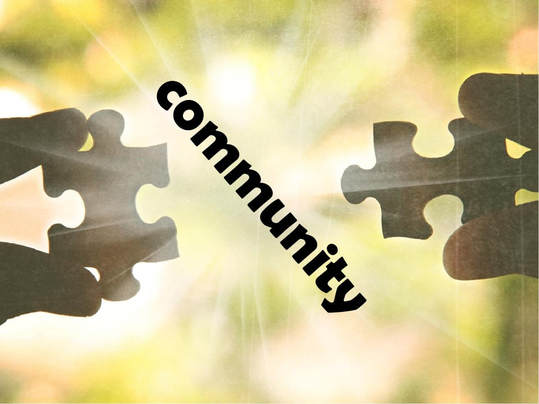I titled this series "Koinonia" in an effort to connect with the forces that have built thriving communities of faith for generations. Because I’m also preaching this series, I hope it motivates my little (but powerful) band of Methodist who partner with me in ministry to also be in touch with the forces of koinonia. By writing these blog posts I have one last opportunity to think about koinonia. But my aspirations end here. So, imagine my surprise to learn that Karthik Nemmani, an eighth-grader from Mckinney, Texas, won the Scripps National Spelling Bee last month with the word “koinonia.” The whole country has been talking about koinonia. How marvelous!
What happened to the forces of koinonia? Where have they gone? I was driving through a modern section of my community and noticed the church buildings. By modern, I mean developed after the 1960’s. I drive this stretch all the time, but this time I noticed something different. I counted four church buildings within a one mile stretch of a busy road. The churches consisted of a single building on four to five acres of land. The land was purchased, and the building was completed. Phase one. Given the size of the property, these congregations had hopes and dreams of completing a phase two and a phase three. As I drove by these congregations, it occurred to me, congregations in the US have been in decline for at least 50 years.
I served a church like this. It was located on a nice piece of property on a major road in a growing and thriving community. The congregation completed phase one. But they were unable to complete phase two and three. The community still worships in phase one.
I’m not advocating for a large church model or congregations with a large campus. There are pluses and minuses to any church size. I’m interested in understanding the factors that contribute to thriving congregations and developing a working definition of “community” that empowers local congregations to be all that God wants them to be! What has happened to koinonia? Let’s start with a definition.
We are talking about humans forming community, so let’s start with a definition of what it means to be human. In a recent blog post, 4 Human Characteristics That May Help Your Congregation Grow, I highlight a definition I discovered at a Smithsonian exhibit on modern humans. The exhibit defined modern humans in four ways: Modern humans share resources, gather at the hearth, take more time to grow, and build social networks. Based on these four distinct qualities of modern humans, what is a viable definition of community?
Today, community is defined by family, church, friends, geographical boundaries, race, religion and culture. When the writer of the Book of Acts described the koinonia of the first church, they didn’t describe it with boundaries or ideologies. Instead, they used a different concept: generosity. They wrote it this way, “Every day, they met together in the temple and ate in their homes. They shared food with gladness and simplicity” (Acts 2:46). Is this similar to the Smithsonian’s definition which states that modern humans share resources?
What then is meant by resources? For thousands of years, it meant that humans shared tools and food. We no longer share these things. We sell and buy them. What do we share today that contributes to the building of community? How does the activity of sharing function to build community?
If you were to write down a definition of community, what would it say? How do you define community? Who is included in your definition? Is anyone excluded? What role do resources play in shaping community? What practices help to form community? What is your definition?
I’m interested in your working definition of community. Please include your working definition in the comment section below or on social media. Be sure to use #koinonia on social media platforms. I look forward to reading how you define koinonia and community.

 RSS Feed
RSS Feed